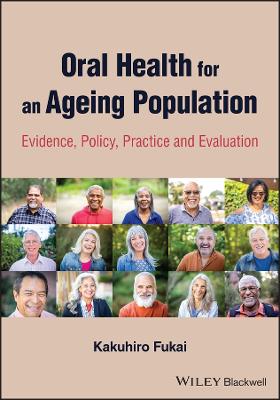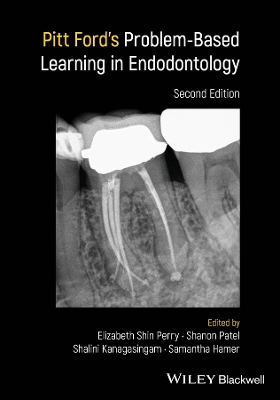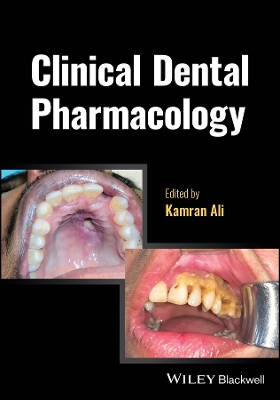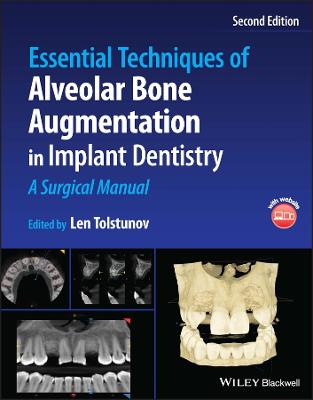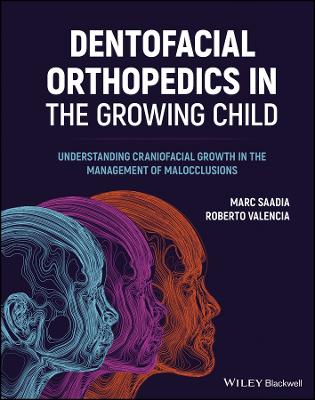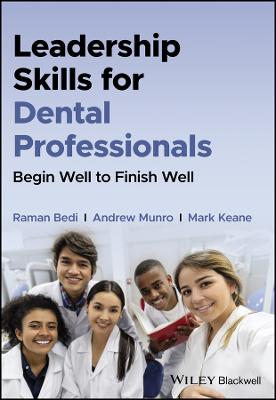Dental Caries
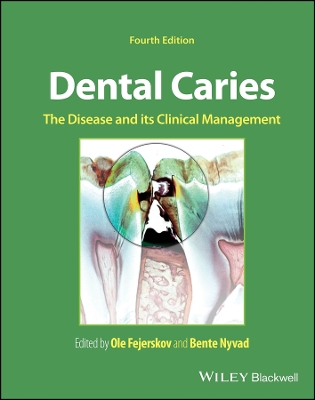 -10%
portes grátis
-10%
portes grátis
Dental Caries
The Disease and its Clinical Management
Fejerskov, Ole; Nyvad, Bente
John Wiley and Sons Ltd
10/2024
432
Dura
Inglês
9781119679370
15 a 20 dias
Descrição não disponível.
Contributors xi
Preface xiii
Part I Dental caries: What is it and what is the magnitude of the problem?
Chapter 1 Dental caries - definitions and clinical features 3
Ole Fejerskov and Bente Nyvad
The editors' view on dental caries and introduction to the book 3
Terminology 5
Examples of dental caries 6
Background literature 15
Chapter 2 Strategic public health considerations for caries control in populations 17
Anja Heilmann and Richard G. Watt
Introduction 17
The global burden of dental caries 18
The role of sugar in the etiology of dental caries 18
Public health principles for preventive action 21
Overview of upstream, midstream, and downstream strategies to prevent dental caries 27
Implications for the dental profession and oral health care systems 30
Conclusion 30
References 31
Chapter 3 Dental caries epidemiology 35
Firoze Manji and Ole Fejerskov
Introduction 35
Probability of an outcome 36
Some standard terms used in epidemiology 40
Measures of central tendency: Mean, median, mode 42
Types of investigation 43
Problems of determining the role of specific factors 44
Analysis and interpretation of data 45
Drawing inferences about associations 51
Age and dental caries 54
International comparisons of occurrence of dental caries 54
Background literature 56
References 56
Part II Diagnosis and detection
Chapter 4 Visual-tactile caries diagnosis and the role of bitewing radiography 61
Bente Nyvad, Vita Machiulskiene, and Vibeke Baelum
Introduction 62
The diagnostic process 62
Two differing perspectives on caries detection 63
Achieving the best health outcome for the patient by classifying caries lesions according to the best management options for each lesion type 63
How early should caries lesions be detected? 65
What are the best visual-tactile caries diagnostic criteria? 65
Commonly used visual-tactile criteria 68
Differential diagnosis 74
Visual-tactile caries examination: A systematic clinical approach 76
Benefits and limitations of visual-tactile caries diagnosis 78
Do we need radiographs for caries detection? 79
Conclusion 82
References 83
Chapter 5 The foundations of good diagnostic practice 85
Vibeke Baelum
Introduction 85
The making of a dentist 86
The dental examination: In the best interest of our patients 87
What are we looking for? What is caries? 88
The wealth of caries diagnostic methods and criteria 90
The evolution in caries diagnostic methods 90
Diagnostic test assessment in the essentialistic gold-standard paradigm 91
Evaluating caries diagnostic methods 92
Leaps in the essentialistic gold-standard reasoning 93
Diagnostic test evaluation in the nominalistic caries paradigm 95
Inter- and intra-examiner errors in caries diagnosis 96
How do we deal with the unavoidable diagnostic uncertainty? 97
The additional diagnostic yield argument 98
Concluding remarks 99
References 100
Part III The oral environment and dental caries
Chapter 6 The oral microbiome - composition, acquisition, establishment, and maturation 105
Gunnar Dahlen
The microbiome 105
The composition of the oral microbiome 107
The composition and structure of oral mucosal and tongue microbiome 116
Dental plaque microbiome 117
The oral microbiome and immunity 120
Acquisition of the oral microbiome 123
Establishment of the oral microbiome 125
Maturation of the oral microbiome 125
Conclusions 129
Background literature 129
References 129
Chapter 7 Functions of the oral microbiome in caries and how they can be controlled 133
Nobuhiro Takahashi and Bente Nyvad
Introduction 133
Bacterial metabolism and ecological factors affecting the cariogenic features of dental biofilm 134
The 'ecological plaque hypothesis' to explain the role of dental biofilm bacteria in the etiology of dental caries 135
How to control a cariogenic drift of the oral microbiome 141
Clinical approaches to caries control by interference with microbial metabolism 144
Prebiotics, probiotics, and synbiotics 146
Concluding remarks 148
References 149
Chapter 8 The essential role of saliva in dental caries and erosion 153
Anne Marie Lynge Pedersen
Introduction 153
The salivary glands and their secretion 154
Neuronal regulation of salivary secretion 155
Formation of saliva 157
Saliva and its role in maintaining dental health 159
The functions of saliva flow and its inorganic and organic electrolytes 164
Saliva gland hypofunction and dental caries and erosion 170
Evaluation of salivary gland function 172
Management of salivary gland hypofunction 175
Concluding remarks 175
Background literature 176
References 176
Part IV What happens in the dental hard tissues and key determinants of caries
Chapter 9 The process of de- and remineralization - the key to understanding clinical manifestations of dental caries 181
Ole Fejerskov and Mogens Joost Larsen
Introduction 181
Enamel mineral 182
Stability of calcium phosphates 183
Crystal dissolution 183
Why is apatite solubility increased by acid? 184
Effect of carbonate and fluoride on apatite dissolution and growth 185
Demineralization and remineralization of the dental hard tissues 186
Caries demineralization 188
Remineralization of enamel 190
Remineralization of dentin 192
Background literature 196
References 196
Chapter 10 Initiation and progression of dental caries in dental hard tissues 199
Ole Fejerskov
Introduction 199
Human dental enamel at the time of eruption 201
Enamel changes during early caries lesion development 205
The approximal white spot lesion 209
Progression of the enamel lesion 213
Arrest of the caries lesion 215
Occlusal caries 216
Dentin reactions to caries progression 221
Pulpo-dentinal reactions 221
Root surface caries 227
Background literature 230
References 230
Chapter 11 Erosion of the teeth 233
Mogens Joost Larsen
Introduction 233
Clinical manifestations and diagnosis 233
Histological and chemical features 236
Classification by depth of the lesion 237
Classification by etiology 237
Erosion caused by food and drinks 237
Erosion caused by stomach contents 242
Erosion caused by airborne acids 243
Idiopathic erosion 243
Prophylaxis and treatment of erosion 244
Conclusion 246
Background literature 246
References 246
Chapter 12 Sugar, diet, and dental caries 247
Cor van Loveren, Peter Lingstroem, and Bente Nyvad
Introduction 247
History 248
Early ecological studies 248
Experimental human studies 249
Influence of fluoride on the diet - caries relationship 250
Which is of more importance - amount or frequency of sugar consumption? 251
Measuring cariogenicity 251
Sweeteners 256
Protective factors in foods 265
Diet and dental erosion 266
Dietary advice for dental health promotion 266
References 267
Chapter 13 Oral hygiene - does it matter? 273
Bente Nyvad
Introduction 273
Some theoretical considerations 273
The biological effect of tooth cleaning 274
The clinical effect of tooth cleaning 274
The effect of professional tooth cleaning 278
The effect of dental flossing 279
Does tooth cleaning matter? 279
References 280
Chapter 14 Fluorides in caries control 283
Ole Fejerskov, Jaime A. Cury, Livia M. A. Tenuta, and Firoze Manji
Introduction 283
Fluoride in caries control 284
Anticaries mechanisms of fluoride 288
Dental fluorosis and metabolism of fluoride 292
Fluoride dose and dental fluorosis 296
Where is fluoride found in nature? 300
Fluoride absorption, distribution, and elimination 300
Fluoride concentration in teeth 301
Pathogenesis of dental fluorosis 303
The efficacy and effectiveness of fluorides in the control of dental caries: Systematic review 303
Rational use of fluorides in caries control 309
Background literature 310
References 310
Part V Caries Control in Children, Adults and Elderly
Chapter 15 The caries control concept 317
Bente Nyvad and Ole Fejerskov
Why the caries control concept should replace caries prevention 317
How caries control was managed in the past 318
Arrest of active enamel caries 319
Arrest of active root caries 320
Arrest of active cavitated caries 321
Role of fluoride in lesion arrest 324
Benefits and limitations of the caries control approach - and some recommendations 324
References 324
Chapter 16 Caries control for the individual patient in all age groups 327
Bente Nyvad and Edwina A.M. Kidd
Introduction 327
How are current caries activity and risk of future caries progression assessed? 328
The 'dental traffic light' 331
What non-operative, treatments are available? 332
How is the individual helped to control disease progression? 337
When should the patient be recalled? 337
Caries control in children and adolescents 339
Caries control in the frail elderly 343
Failure 345
References 346
Part VI Intervention and treatment
Chapter 17 Carious cavities - how to manage the 'infected' dentin and the pulpal response 351
Bente Nyvad, Edwina A.M. Kidd, and Ole Fejerskov
Introduction 351
The caries process in dentin 352
Mineral distribution in dentin caries 352
Inflammatory reactions to caries in the dental pulp 354
How to manage the carious dentin 355
How much carious dentin needs to be removed? 355
Excavation techniques 356
Excavation protocols 356
Excavation of deep dentin lesions 358
Concluding remarks 360
References 360
Chapter 18 Control of dental caries by minimally invasive restorative intervention 363
Sebastian Schlafer, Irene Dige, and Bente Nyvad
Introduction 363
The strategy for minimally invasive restorative intervention of caries 364
Micro-invasive treatments 364
Minimally invasive operative treatment 369
Defective restorations: replacement or repair? 376
A final word of caution 377
References 377
Part VII The Implication of Caries Control for the Dental profession
Chapter 19 How accurately can we assess the risk of developing caries lesions? 383
Hannu Hausen
Introduction 383
The risk of developing caries lesions cannot be observed directly for an individual patient 384
The course of a typical study for evaluating the accuracy of a prediction 385
A real-life example of using a single, dichotomous predictor 387
Interpretation and use of the measures of prediction accuracy 387
What level of accuracy would be sufficient in everyday practice? 393
What level of accuracy can be achieved? 393
Social factors 395
Clinical caries risk assessment: is it possible? 396
How valuable are the proposed measures? 396
Concluding remarks 397
Background literature 397
References 397
Chapter 20 Oral health care - past, present, and future perspectives 401
Ole Fejerskov and Firoze Manji
A brief history of the emergence of dentistry 401
How many dentists are needed? 402
Caries research in the last 50 years 403
A possible future for oral health care in the times of COVID-19 404
References 405
Index 407
Preface xiii
Part I Dental caries: What is it and what is the magnitude of the problem?
Chapter 1 Dental caries - definitions and clinical features 3
Ole Fejerskov and Bente Nyvad
The editors' view on dental caries and introduction to the book 3
Terminology 5
Examples of dental caries 6
Background literature 15
Chapter 2 Strategic public health considerations for caries control in populations 17
Anja Heilmann and Richard G. Watt
Introduction 17
The global burden of dental caries 18
The role of sugar in the etiology of dental caries 18
Public health principles for preventive action 21
Overview of upstream, midstream, and downstream strategies to prevent dental caries 27
Implications for the dental profession and oral health care systems 30
Conclusion 30
References 31
Chapter 3 Dental caries epidemiology 35
Firoze Manji and Ole Fejerskov
Introduction 35
Probability of an outcome 36
Some standard terms used in epidemiology 40
Measures of central tendency: Mean, median, mode 42
Types of investigation 43
Problems of determining the role of specific factors 44
Analysis and interpretation of data 45
Drawing inferences about associations 51
Age and dental caries 54
International comparisons of occurrence of dental caries 54
Background literature 56
References 56
Part II Diagnosis and detection
Chapter 4 Visual-tactile caries diagnosis and the role of bitewing radiography 61
Bente Nyvad, Vita Machiulskiene, and Vibeke Baelum
Introduction 62
The diagnostic process 62
Two differing perspectives on caries detection 63
Achieving the best health outcome for the patient by classifying caries lesions according to the best management options for each lesion type 63
How early should caries lesions be detected? 65
What are the best visual-tactile caries diagnostic criteria? 65
Commonly used visual-tactile criteria 68
Differential diagnosis 74
Visual-tactile caries examination: A systematic clinical approach 76
Benefits and limitations of visual-tactile caries diagnosis 78
Do we need radiographs for caries detection? 79
Conclusion 82
References 83
Chapter 5 The foundations of good diagnostic practice 85
Vibeke Baelum
Introduction 85
The making of a dentist 86
The dental examination: In the best interest of our patients 87
What are we looking for? What is caries? 88
The wealth of caries diagnostic methods and criteria 90
The evolution in caries diagnostic methods 90
Diagnostic test assessment in the essentialistic gold-standard paradigm 91
Evaluating caries diagnostic methods 92
Leaps in the essentialistic gold-standard reasoning 93
Diagnostic test evaluation in the nominalistic caries paradigm 95
Inter- and intra-examiner errors in caries diagnosis 96
How do we deal with the unavoidable diagnostic uncertainty? 97
The additional diagnostic yield argument 98
Concluding remarks 99
References 100
Part III The oral environment and dental caries
Chapter 6 The oral microbiome - composition, acquisition, establishment, and maturation 105
Gunnar Dahlen
The microbiome 105
The composition of the oral microbiome 107
The composition and structure of oral mucosal and tongue microbiome 116
Dental plaque microbiome 117
The oral microbiome and immunity 120
Acquisition of the oral microbiome 123
Establishment of the oral microbiome 125
Maturation of the oral microbiome 125
Conclusions 129
Background literature 129
References 129
Chapter 7 Functions of the oral microbiome in caries and how they can be controlled 133
Nobuhiro Takahashi and Bente Nyvad
Introduction 133
Bacterial metabolism and ecological factors affecting the cariogenic features of dental biofilm 134
The 'ecological plaque hypothesis' to explain the role of dental biofilm bacteria in the etiology of dental caries 135
How to control a cariogenic drift of the oral microbiome 141
Clinical approaches to caries control by interference with microbial metabolism 144
Prebiotics, probiotics, and synbiotics 146
Concluding remarks 148
References 149
Chapter 8 The essential role of saliva in dental caries and erosion 153
Anne Marie Lynge Pedersen
Introduction 153
The salivary glands and their secretion 154
Neuronal regulation of salivary secretion 155
Formation of saliva 157
Saliva and its role in maintaining dental health 159
The functions of saliva flow and its inorganic and organic electrolytes 164
Saliva gland hypofunction and dental caries and erosion 170
Evaluation of salivary gland function 172
Management of salivary gland hypofunction 175
Concluding remarks 175
Background literature 176
References 176
Part IV What happens in the dental hard tissues and key determinants of caries
Chapter 9 The process of de- and remineralization - the key to understanding clinical manifestations of dental caries 181
Ole Fejerskov and Mogens Joost Larsen
Introduction 181
Enamel mineral 182
Stability of calcium phosphates 183
Crystal dissolution 183
Why is apatite solubility increased by acid? 184
Effect of carbonate and fluoride on apatite dissolution and growth 185
Demineralization and remineralization of the dental hard tissues 186
Caries demineralization 188
Remineralization of enamel 190
Remineralization of dentin 192
Background literature 196
References 196
Chapter 10 Initiation and progression of dental caries in dental hard tissues 199
Ole Fejerskov
Introduction 199
Human dental enamel at the time of eruption 201
Enamel changes during early caries lesion development 205
The approximal white spot lesion 209
Progression of the enamel lesion 213
Arrest of the caries lesion 215
Occlusal caries 216
Dentin reactions to caries progression 221
Pulpo-dentinal reactions 221
Root surface caries 227
Background literature 230
References 230
Chapter 11 Erosion of the teeth 233
Mogens Joost Larsen
Introduction 233
Clinical manifestations and diagnosis 233
Histological and chemical features 236
Classification by depth of the lesion 237
Classification by etiology 237
Erosion caused by food and drinks 237
Erosion caused by stomach contents 242
Erosion caused by airborne acids 243
Idiopathic erosion 243
Prophylaxis and treatment of erosion 244
Conclusion 246
Background literature 246
References 246
Chapter 12 Sugar, diet, and dental caries 247
Cor van Loveren, Peter Lingstroem, and Bente Nyvad
Introduction 247
History 248
Early ecological studies 248
Experimental human studies 249
Influence of fluoride on the diet - caries relationship 250
Which is of more importance - amount or frequency of sugar consumption? 251
Measuring cariogenicity 251
Sweeteners 256
Protective factors in foods 265
Diet and dental erosion 266
Dietary advice for dental health promotion 266
References 267
Chapter 13 Oral hygiene - does it matter? 273
Bente Nyvad
Introduction 273
Some theoretical considerations 273
The biological effect of tooth cleaning 274
The clinical effect of tooth cleaning 274
The effect of professional tooth cleaning 278
The effect of dental flossing 279
Does tooth cleaning matter? 279
References 280
Chapter 14 Fluorides in caries control 283
Ole Fejerskov, Jaime A. Cury, Livia M. A. Tenuta, and Firoze Manji
Introduction 283
Fluoride in caries control 284
Anticaries mechanisms of fluoride 288
Dental fluorosis and metabolism of fluoride 292
Fluoride dose and dental fluorosis 296
Where is fluoride found in nature? 300
Fluoride absorption, distribution, and elimination 300
Fluoride concentration in teeth 301
Pathogenesis of dental fluorosis 303
The efficacy and effectiveness of fluorides in the control of dental caries: Systematic review 303
Rational use of fluorides in caries control 309
Background literature 310
References 310
Part V Caries Control in Children, Adults and Elderly
Chapter 15 The caries control concept 317
Bente Nyvad and Ole Fejerskov
Why the caries control concept should replace caries prevention 317
How caries control was managed in the past 318
Arrest of active enamel caries 319
Arrest of active root caries 320
Arrest of active cavitated caries 321
Role of fluoride in lesion arrest 324
Benefits and limitations of the caries control approach - and some recommendations 324
References 324
Chapter 16 Caries control for the individual patient in all age groups 327
Bente Nyvad and Edwina A.M. Kidd
Introduction 327
How are current caries activity and risk of future caries progression assessed? 328
The 'dental traffic light' 331
What non-operative, treatments are available? 332
How is the individual helped to control disease progression? 337
When should the patient be recalled? 337
Caries control in children and adolescents 339
Caries control in the frail elderly 343
Failure 345
References 346
Part VI Intervention and treatment
Chapter 17 Carious cavities - how to manage the 'infected' dentin and the pulpal response 351
Bente Nyvad, Edwina A.M. Kidd, and Ole Fejerskov
Introduction 351
The caries process in dentin 352
Mineral distribution in dentin caries 352
Inflammatory reactions to caries in the dental pulp 354
How to manage the carious dentin 355
How much carious dentin needs to be removed? 355
Excavation techniques 356
Excavation protocols 356
Excavation of deep dentin lesions 358
Concluding remarks 360
References 360
Chapter 18 Control of dental caries by minimally invasive restorative intervention 363
Sebastian Schlafer, Irene Dige, and Bente Nyvad
Introduction 363
The strategy for minimally invasive restorative intervention of caries 364
Micro-invasive treatments 364
Minimally invasive operative treatment 369
Defective restorations: replacement or repair? 376
A final word of caution 377
References 377
Part VII The Implication of Caries Control for the Dental profession
Chapter 19 How accurately can we assess the risk of developing caries lesions? 383
Hannu Hausen
Introduction 383
The risk of developing caries lesions cannot be observed directly for an individual patient 384
The course of a typical study for evaluating the accuracy of a prediction 385
A real-life example of using a single, dichotomous predictor 387
Interpretation and use of the measures of prediction accuracy 387
What level of accuracy would be sufficient in everyday practice? 393
What level of accuracy can be achieved? 393
Social factors 395
Clinical caries risk assessment: is it possible? 396
How valuable are the proposed measures? 396
Concluding remarks 397
Background literature 397
References 397
Chapter 20 Oral health care - past, present, and future perspectives 401
Ole Fejerskov and Firoze Manji
A brief history of the emergence of dentistry 401
How many dentists are needed? 402
Caries research in the last 50 years 403
A possible future for oral health care in the times of COVID-19 404
References 405
Index 407
Este título pertence ao(s) assunto(s) indicados(s). Para ver outros títulos clique no assunto desejado.
dental caries diagnosis; Caries; dental caries; oral microbiome; tooth decay; tooth decay diet; tooth decay control; tooth decay detection; tooth decay diagnosis; tooth decay best practices; tooth decay textbook; tooth decay management; fluoride decay; tooth decay intervention; tooth decay microbiology; erosion; clinical decision making; tooth decay ICDAS; tooth decay risk assessment; dental caries detection
Contributors xi
Preface xiii
Part I Dental caries: What is it and what is the magnitude of the problem?
Chapter 1 Dental caries - definitions and clinical features 3
Ole Fejerskov and Bente Nyvad
The editors' view on dental caries and introduction to the book 3
Terminology 5
Examples of dental caries 6
Background literature 15
Chapter 2 Strategic public health considerations for caries control in populations 17
Anja Heilmann and Richard G. Watt
Introduction 17
The global burden of dental caries 18
The role of sugar in the etiology of dental caries 18
Public health principles for preventive action 21
Overview of upstream, midstream, and downstream strategies to prevent dental caries 27
Implications for the dental profession and oral health care systems 30
Conclusion 30
References 31
Chapter 3 Dental caries epidemiology 35
Firoze Manji and Ole Fejerskov
Introduction 35
Probability of an outcome 36
Some standard terms used in epidemiology 40
Measures of central tendency: Mean, median, mode 42
Types of investigation 43
Problems of determining the role of specific factors 44
Analysis and interpretation of data 45
Drawing inferences about associations 51
Age and dental caries 54
International comparisons of occurrence of dental caries 54
Background literature 56
References 56
Part II Diagnosis and detection
Chapter 4 Visual-tactile caries diagnosis and the role of bitewing radiography 61
Bente Nyvad, Vita Machiulskiene, and Vibeke Baelum
Introduction 62
The diagnostic process 62
Two differing perspectives on caries detection 63
Achieving the best health outcome for the patient by classifying caries lesions according to the best management options for each lesion type 63
How early should caries lesions be detected? 65
What are the best visual-tactile caries diagnostic criteria? 65
Commonly used visual-tactile criteria 68
Differential diagnosis 74
Visual-tactile caries examination: A systematic clinical approach 76
Benefits and limitations of visual-tactile caries diagnosis 78
Do we need radiographs for caries detection? 79
Conclusion 82
References 83
Chapter 5 The foundations of good diagnostic practice 85
Vibeke Baelum
Introduction 85
The making of a dentist 86
The dental examination: In the best interest of our patients 87
What are we looking for? What is caries? 88
The wealth of caries diagnostic methods and criteria 90
The evolution in caries diagnostic methods 90
Diagnostic test assessment in the essentialistic gold-standard paradigm 91
Evaluating caries diagnostic methods 92
Leaps in the essentialistic gold-standard reasoning 93
Diagnostic test evaluation in the nominalistic caries paradigm 95
Inter- and intra-examiner errors in caries diagnosis 96
How do we deal with the unavoidable diagnostic uncertainty? 97
The additional diagnostic yield argument 98
Concluding remarks 99
References 100
Part III The oral environment and dental caries
Chapter 6 The oral microbiome - composition, acquisition, establishment, and maturation 105
Gunnar Dahlen
The microbiome 105
The composition of the oral microbiome 107
The composition and structure of oral mucosal and tongue microbiome 116
Dental plaque microbiome 117
The oral microbiome and immunity 120
Acquisition of the oral microbiome 123
Establishment of the oral microbiome 125
Maturation of the oral microbiome 125
Conclusions 129
Background literature 129
References 129
Chapter 7 Functions of the oral microbiome in caries and how they can be controlled 133
Nobuhiro Takahashi and Bente Nyvad
Introduction 133
Bacterial metabolism and ecological factors affecting the cariogenic features of dental biofilm 134
The 'ecological plaque hypothesis' to explain the role of dental biofilm bacteria in the etiology of dental caries 135
How to control a cariogenic drift of the oral microbiome 141
Clinical approaches to caries control by interference with microbial metabolism 144
Prebiotics, probiotics, and synbiotics 146
Concluding remarks 148
References 149
Chapter 8 The essential role of saliva in dental caries and erosion 153
Anne Marie Lynge Pedersen
Introduction 153
The salivary glands and their secretion 154
Neuronal regulation of salivary secretion 155
Formation of saliva 157
Saliva and its role in maintaining dental health 159
The functions of saliva flow and its inorganic and organic electrolytes 164
Saliva gland hypofunction and dental caries and erosion 170
Evaluation of salivary gland function 172
Management of salivary gland hypofunction 175
Concluding remarks 175
Background literature 176
References 176
Part IV What happens in the dental hard tissues and key determinants of caries
Chapter 9 The process of de- and remineralization - the key to understanding clinical manifestations of dental caries 181
Ole Fejerskov and Mogens Joost Larsen
Introduction 181
Enamel mineral 182
Stability of calcium phosphates 183
Crystal dissolution 183
Why is apatite solubility increased by acid? 184
Effect of carbonate and fluoride on apatite dissolution and growth 185
Demineralization and remineralization of the dental hard tissues 186
Caries demineralization 188
Remineralization of enamel 190
Remineralization of dentin 192
Background literature 196
References 196
Chapter 10 Initiation and progression of dental caries in dental hard tissues 199
Ole Fejerskov
Introduction 199
Human dental enamel at the time of eruption 201
Enamel changes during early caries lesion development 205
The approximal white spot lesion 209
Progression of the enamel lesion 213
Arrest of the caries lesion 215
Occlusal caries 216
Dentin reactions to caries progression 221
Pulpo-dentinal reactions 221
Root surface caries 227
Background literature 230
References 230
Chapter 11 Erosion of the teeth 233
Mogens Joost Larsen
Introduction 233
Clinical manifestations and diagnosis 233
Histological and chemical features 236
Classification by depth of the lesion 237
Classification by etiology 237
Erosion caused by food and drinks 237
Erosion caused by stomach contents 242
Erosion caused by airborne acids 243
Idiopathic erosion 243
Prophylaxis and treatment of erosion 244
Conclusion 246
Background literature 246
References 246
Chapter 12 Sugar, diet, and dental caries 247
Cor van Loveren, Peter Lingstroem, and Bente Nyvad
Introduction 247
History 248
Early ecological studies 248
Experimental human studies 249
Influence of fluoride on the diet - caries relationship 250
Which is of more importance - amount or frequency of sugar consumption? 251
Measuring cariogenicity 251
Sweeteners 256
Protective factors in foods 265
Diet and dental erosion 266
Dietary advice for dental health promotion 266
References 267
Chapter 13 Oral hygiene - does it matter? 273
Bente Nyvad
Introduction 273
Some theoretical considerations 273
The biological effect of tooth cleaning 274
The clinical effect of tooth cleaning 274
The effect of professional tooth cleaning 278
The effect of dental flossing 279
Does tooth cleaning matter? 279
References 280
Chapter 14 Fluorides in caries control 283
Ole Fejerskov, Jaime A. Cury, Livia M. A. Tenuta, and Firoze Manji
Introduction 283
Fluoride in caries control 284
Anticaries mechanisms of fluoride 288
Dental fluorosis and metabolism of fluoride 292
Fluoride dose and dental fluorosis 296
Where is fluoride found in nature? 300
Fluoride absorption, distribution, and elimination 300
Fluoride concentration in teeth 301
Pathogenesis of dental fluorosis 303
The efficacy and effectiveness of fluorides in the control of dental caries: Systematic review 303
Rational use of fluorides in caries control 309
Background literature 310
References 310
Part V Caries Control in Children, Adults and Elderly
Chapter 15 The caries control concept 317
Bente Nyvad and Ole Fejerskov
Why the caries control concept should replace caries prevention 317
How caries control was managed in the past 318
Arrest of active enamel caries 319
Arrest of active root caries 320
Arrest of active cavitated caries 321
Role of fluoride in lesion arrest 324
Benefits and limitations of the caries control approach - and some recommendations 324
References 324
Chapter 16 Caries control for the individual patient in all age groups 327
Bente Nyvad and Edwina A.M. Kidd
Introduction 327
How are current caries activity and risk of future caries progression assessed? 328
The 'dental traffic light' 331
What non-operative, treatments are available? 332
How is the individual helped to control disease progression? 337
When should the patient be recalled? 337
Caries control in children and adolescents 339
Caries control in the frail elderly 343
Failure 345
References 346
Part VI Intervention and treatment
Chapter 17 Carious cavities - how to manage the 'infected' dentin and the pulpal response 351
Bente Nyvad, Edwina A.M. Kidd, and Ole Fejerskov
Introduction 351
The caries process in dentin 352
Mineral distribution in dentin caries 352
Inflammatory reactions to caries in the dental pulp 354
How to manage the carious dentin 355
How much carious dentin needs to be removed? 355
Excavation techniques 356
Excavation protocols 356
Excavation of deep dentin lesions 358
Concluding remarks 360
References 360
Chapter 18 Control of dental caries by minimally invasive restorative intervention 363
Sebastian Schlafer, Irene Dige, and Bente Nyvad
Introduction 363
The strategy for minimally invasive restorative intervention of caries 364
Micro-invasive treatments 364
Minimally invasive operative treatment 369
Defective restorations: replacement or repair? 376
A final word of caution 377
References 377
Part VII The Implication of Caries Control for the Dental profession
Chapter 19 How accurately can we assess the risk of developing caries lesions? 383
Hannu Hausen
Introduction 383
The risk of developing caries lesions cannot be observed directly for an individual patient 384
The course of a typical study for evaluating the accuracy of a prediction 385
A real-life example of using a single, dichotomous predictor 387
Interpretation and use of the measures of prediction accuracy 387
What level of accuracy would be sufficient in everyday practice? 393
What level of accuracy can be achieved? 393
Social factors 395
Clinical caries risk assessment: is it possible? 396
How valuable are the proposed measures? 396
Concluding remarks 397
Background literature 397
References 397
Chapter 20 Oral health care - past, present, and future perspectives 401
Ole Fejerskov and Firoze Manji
A brief history of the emergence of dentistry 401
How many dentists are needed? 402
Caries research in the last 50 years 403
A possible future for oral health care in the times of COVID-19 404
References 405
Index 407
Preface xiii
Part I Dental caries: What is it and what is the magnitude of the problem?
Chapter 1 Dental caries - definitions and clinical features 3
Ole Fejerskov and Bente Nyvad
The editors' view on dental caries and introduction to the book 3
Terminology 5
Examples of dental caries 6
Background literature 15
Chapter 2 Strategic public health considerations for caries control in populations 17
Anja Heilmann and Richard G. Watt
Introduction 17
The global burden of dental caries 18
The role of sugar in the etiology of dental caries 18
Public health principles for preventive action 21
Overview of upstream, midstream, and downstream strategies to prevent dental caries 27
Implications for the dental profession and oral health care systems 30
Conclusion 30
References 31
Chapter 3 Dental caries epidemiology 35
Firoze Manji and Ole Fejerskov
Introduction 35
Probability of an outcome 36
Some standard terms used in epidemiology 40
Measures of central tendency: Mean, median, mode 42
Types of investigation 43
Problems of determining the role of specific factors 44
Analysis and interpretation of data 45
Drawing inferences about associations 51
Age and dental caries 54
International comparisons of occurrence of dental caries 54
Background literature 56
References 56
Part II Diagnosis and detection
Chapter 4 Visual-tactile caries diagnosis and the role of bitewing radiography 61
Bente Nyvad, Vita Machiulskiene, and Vibeke Baelum
Introduction 62
The diagnostic process 62
Two differing perspectives on caries detection 63
Achieving the best health outcome for the patient by classifying caries lesions according to the best management options for each lesion type 63
How early should caries lesions be detected? 65
What are the best visual-tactile caries diagnostic criteria? 65
Commonly used visual-tactile criteria 68
Differential diagnosis 74
Visual-tactile caries examination: A systematic clinical approach 76
Benefits and limitations of visual-tactile caries diagnosis 78
Do we need radiographs for caries detection? 79
Conclusion 82
References 83
Chapter 5 The foundations of good diagnostic practice 85
Vibeke Baelum
Introduction 85
The making of a dentist 86
The dental examination: In the best interest of our patients 87
What are we looking for? What is caries? 88
The wealth of caries diagnostic methods and criteria 90
The evolution in caries diagnostic methods 90
Diagnostic test assessment in the essentialistic gold-standard paradigm 91
Evaluating caries diagnostic methods 92
Leaps in the essentialistic gold-standard reasoning 93
Diagnostic test evaluation in the nominalistic caries paradigm 95
Inter- and intra-examiner errors in caries diagnosis 96
How do we deal with the unavoidable diagnostic uncertainty? 97
The additional diagnostic yield argument 98
Concluding remarks 99
References 100
Part III The oral environment and dental caries
Chapter 6 The oral microbiome - composition, acquisition, establishment, and maturation 105
Gunnar Dahlen
The microbiome 105
The composition of the oral microbiome 107
The composition and structure of oral mucosal and tongue microbiome 116
Dental plaque microbiome 117
The oral microbiome and immunity 120
Acquisition of the oral microbiome 123
Establishment of the oral microbiome 125
Maturation of the oral microbiome 125
Conclusions 129
Background literature 129
References 129
Chapter 7 Functions of the oral microbiome in caries and how they can be controlled 133
Nobuhiro Takahashi and Bente Nyvad
Introduction 133
Bacterial metabolism and ecological factors affecting the cariogenic features of dental biofilm 134
The 'ecological plaque hypothesis' to explain the role of dental biofilm bacteria in the etiology of dental caries 135
How to control a cariogenic drift of the oral microbiome 141
Clinical approaches to caries control by interference with microbial metabolism 144
Prebiotics, probiotics, and synbiotics 146
Concluding remarks 148
References 149
Chapter 8 The essential role of saliva in dental caries and erosion 153
Anne Marie Lynge Pedersen
Introduction 153
The salivary glands and their secretion 154
Neuronal regulation of salivary secretion 155
Formation of saliva 157
Saliva and its role in maintaining dental health 159
The functions of saliva flow and its inorganic and organic electrolytes 164
Saliva gland hypofunction and dental caries and erosion 170
Evaluation of salivary gland function 172
Management of salivary gland hypofunction 175
Concluding remarks 175
Background literature 176
References 176
Part IV What happens in the dental hard tissues and key determinants of caries
Chapter 9 The process of de- and remineralization - the key to understanding clinical manifestations of dental caries 181
Ole Fejerskov and Mogens Joost Larsen
Introduction 181
Enamel mineral 182
Stability of calcium phosphates 183
Crystal dissolution 183
Why is apatite solubility increased by acid? 184
Effect of carbonate and fluoride on apatite dissolution and growth 185
Demineralization and remineralization of the dental hard tissues 186
Caries demineralization 188
Remineralization of enamel 190
Remineralization of dentin 192
Background literature 196
References 196
Chapter 10 Initiation and progression of dental caries in dental hard tissues 199
Ole Fejerskov
Introduction 199
Human dental enamel at the time of eruption 201
Enamel changes during early caries lesion development 205
The approximal white spot lesion 209
Progression of the enamel lesion 213
Arrest of the caries lesion 215
Occlusal caries 216
Dentin reactions to caries progression 221
Pulpo-dentinal reactions 221
Root surface caries 227
Background literature 230
References 230
Chapter 11 Erosion of the teeth 233
Mogens Joost Larsen
Introduction 233
Clinical manifestations and diagnosis 233
Histological and chemical features 236
Classification by depth of the lesion 237
Classification by etiology 237
Erosion caused by food and drinks 237
Erosion caused by stomach contents 242
Erosion caused by airborne acids 243
Idiopathic erosion 243
Prophylaxis and treatment of erosion 244
Conclusion 246
Background literature 246
References 246
Chapter 12 Sugar, diet, and dental caries 247
Cor van Loveren, Peter Lingstroem, and Bente Nyvad
Introduction 247
History 248
Early ecological studies 248
Experimental human studies 249
Influence of fluoride on the diet - caries relationship 250
Which is of more importance - amount or frequency of sugar consumption? 251
Measuring cariogenicity 251
Sweeteners 256
Protective factors in foods 265
Diet and dental erosion 266
Dietary advice for dental health promotion 266
References 267
Chapter 13 Oral hygiene - does it matter? 273
Bente Nyvad
Introduction 273
Some theoretical considerations 273
The biological effect of tooth cleaning 274
The clinical effect of tooth cleaning 274
The effect of professional tooth cleaning 278
The effect of dental flossing 279
Does tooth cleaning matter? 279
References 280
Chapter 14 Fluorides in caries control 283
Ole Fejerskov, Jaime A. Cury, Livia M. A. Tenuta, and Firoze Manji
Introduction 283
Fluoride in caries control 284
Anticaries mechanisms of fluoride 288
Dental fluorosis and metabolism of fluoride 292
Fluoride dose and dental fluorosis 296
Where is fluoride found in nature? 300
Fluoride absorption, distribution, and elimination 300
Fluoride concentration in teeth 301
Pathogenesis of dental fluorosis 303
The efficacy and effectiveness of fluorides in the control of dental caries: Systematic review 303
Rational use of fluorides in caries control 309
Background literature 310
References 310
Part V Caries Control in Children, Adults and Elderly
Chapter 15 The caries control concept 317
Bente Nyvad and Ole Fejerskov
Why the caries control concept should replace caries prevention 317
How caries control was managed in the past 318
Arrest of active enamel caries 319
Arrest of active root caries 320
Arrest of active cavitated caries 321
Role of fluoride in lesion arrest 324
Benefits and limitations of the caries control approach - and some recommendations 324
References 324
Chapter 16 Caries control for the individual patient in all age groups 327
Bente Nyvad and Edwina A.M. Kidd
Introduction 327
How are current caries activity and risk of future caries progression assessed? 328
The 'dental traffic light' 331
What non-operative, treatments are available? 332
How is the individual helped to control disease progression? 337
When should the patient be recalled? 337
Caries control in children and adolescents 339
Caries control in the frail elderly 343
Failure 345
References 346
Part VI Intervention and treatment
Chapter 17 Carious cavities - how to manage the 'infected' dentin and the pulpal response 351
Bente Nyvad, Edwina A.M. Kidd, and Ole Fejerskov
Introduction 351
The caries process in dentin 352
Mineral distribution in dentin caries 352
Inflammatory reactions to caries in the dental pulp 354
How to manage the carious dentin 355
How much carious dentin needs to be removed? 355
Excavation techniques 356
Excavation protocols 356
Excavation of deep dentin lesions 358
Concluding remarks 360
References 360
Chapter 18 Control of dental caries by minimally invasive restorative intervention 363
Sebastian Schlafer, Irene Dige, and Bente Nyvad
Introduction 363
The strategy for minimally invasive restorative intervention of caries 364
Micro-invasive treatments 364
Minimally invasive operative treatment 369
Defective restorations: replacement or repair? 376
A final word of caution 377
References 377
Part VII The Implication of Caries Control for the Dental profession
Chapter 19 How accurately can we assess the risk of developing caries lesions? 383
Hannu Hausen
Introduction 383
The risk of developing caries lesions cannot be observed directly for an individual patient 384
The course of a typical study for evaluating the accuracy of a prediction 385
A real-life example of using a single, dichotomous predictor 387
Interpretation and use of the measures of prediction accuracy 387
What level of accuracy would be sufficient in everyday practice? 393
What level of accuracy can be achieved? 393
Social factors 395
Clinical caries risk assessment: is it possible? 396
How valuable are the proposed measures? 396
Concluding remarks 397
Background literature 397
References 397
Chapter 20 Oral health care - past, present, and future perspectives 401
Ole Fejerskov and Firoze Manji
A brief history of the emergence of dentistry 401
How many dentists are needed? 402
Caries research in the last 50 years 403
A possible future for oral health care in the times of COVID-19 404
References 405
Index 407
Este título pertence ao(s) assunto(s) indicados(s). Para ver outros títulos clique no assunto desejado.
dental caries diagnosis; Caries; dental caries; oral microbiome; tooth decay; tooth decay diet; tooth decay control; tooth decay detection; tooth decay diagnosis; tooth decay best practices; tooth decay textbook; tooth decay management; fluoride decay; tooth decay intervention; tooth decay microbiology; erosion; clinical decision making; tooth decay ICDAS; tooth decay risk assessment; dental caries detection

